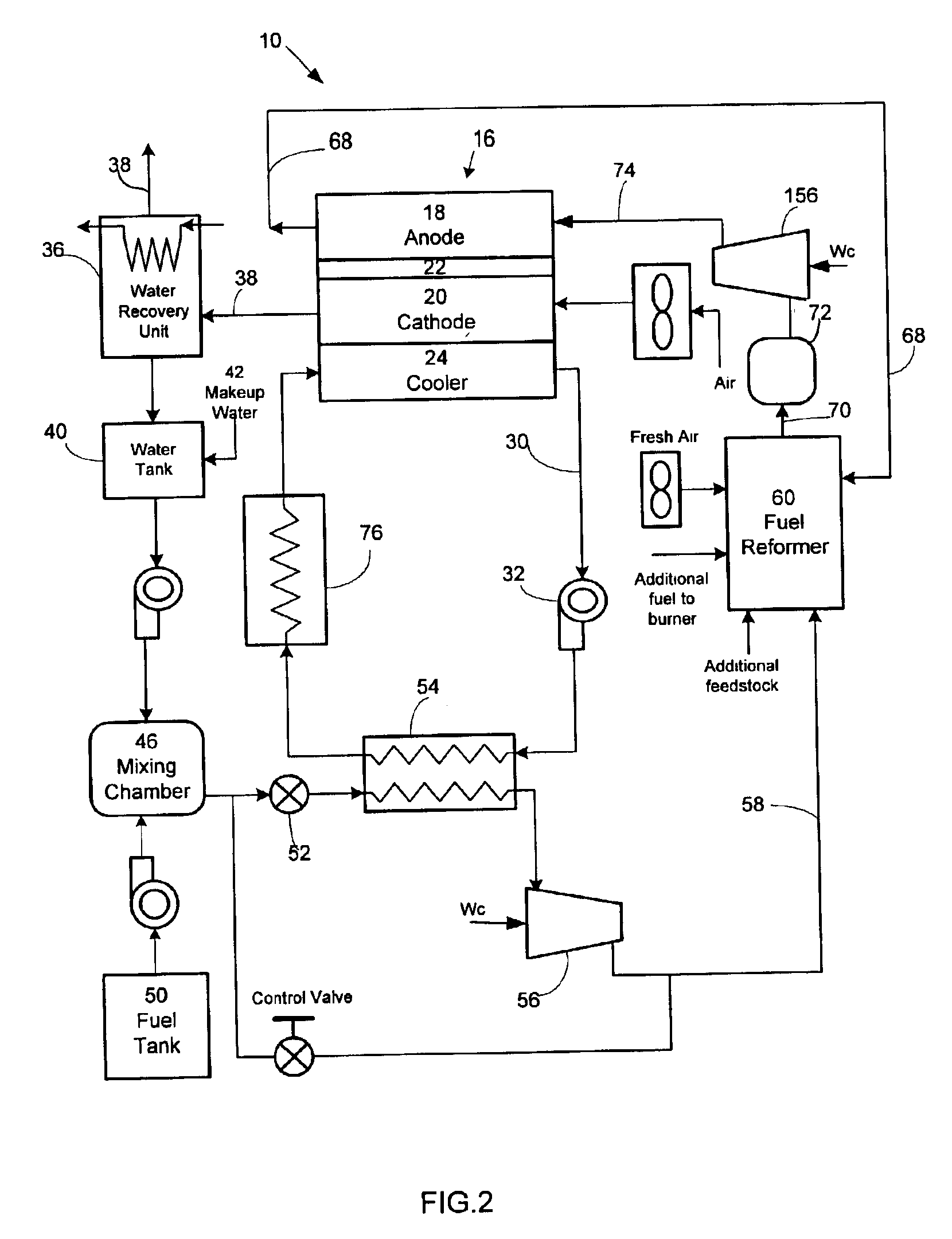Waste heat recovery means for fuel cell power system
a fuel cell power system and heat recovery technology, applied in the direction of cell components, electrochemical generators, cell component details, etc., can solve the problems of large amount of energy needed for fuel processing, difficulty in dissipating waste heat generated by the fuel cell stack, and large use of fuel cell power systems, so as to facilitate heat transfer, reduce the total thermal energy required for fuel reformers, and reduce the effect of energy consumption
- Summary
- Abstract
- Description
- Claims
- Application Information
AI Technical Summary
Benefits of technology
Problems solved by technology
Method used
Image
Examples
Embodiment Construction
[0010]With reference to FIG. 1, which illustrates a reformate / air fuel cell power system 10 according to a preferred form of the present invention. The fuel cell power system 10 generally comprises at least a fuel cell stack 16 which includes at least an anode electrode 18, a cathode electrode 20, an electrolyte 22 such as a proton exchange membrane (PEM) between the anode and cathode, and a cooler section 24. The cooler section 24 could be integrated with a close-looped cooling system 30 with a coolant pump 32 which circulates a liquid coolant within the loop to remove the waste heat from the fuel cell stack, as shown in FIG. 1. Alternatively, the cooler section could be integrated with a heat pipe device which removes the waste heat from the fuel cell stack through the two-phase heat transfer mechanism, or an open-looped air cooling system to remove the waste heat from the fuel cell stack (not shown). A water recovery unit 36 recovers water from the cathode exhaust air stream 38 a...
PUM
| Property | Measurement | Unit |
|---|---|---|
| temperature | aaaaa | aaaaa |
| temperature | aaaaa | aaaaa |
| pressure | aaaaa | aaaaa |
Abstract
Description
Claims
Application Information
 Login to View More
Login to View More - R&D
- Intellectual Property
- Life Sciences
- Materials
- Tech Scout
- Unparalleled Data Quality
- Higher Quality Content
- 60% Fewer Hallucinations
Browse by: Latest US Patents, China's latest patents, Technical Efficacy Thesaurus, Application Domain, Technology Topic, Popular Technical Reports.
© 2025 PatSnap. All rights reserved.Legal|Privacy policy|Modern Slavery Act Transparency Statement|Sitemap|About US| Contact US: help@patsnap.com



